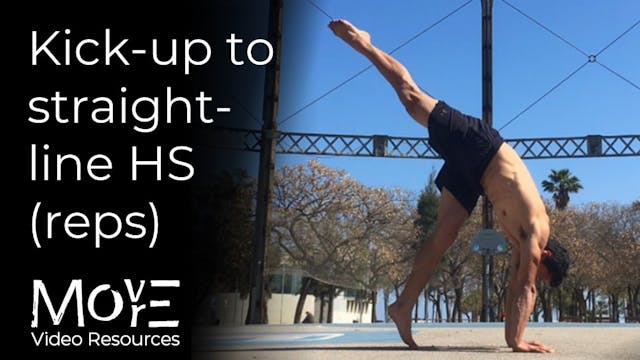Jump to tuck-handstand (reps)
Handstand entry & exit
•
1m 15s
THE WHAT & WHY:
A simple context for developing the consistency of your jump into tuck-HS form. The objective is to develop EFFICIENCY: the jump-up should feel as easy as possible, use as little energy as possible, make as little noise as possible on landing and use the REBOUND to re-enter the next repetition.
The benefit of focusing on handstand kick-up consistency is that, the less time & energy you spend in attempts trying to kick-up, the more you have for the actual practice of balance.
LEARN MORE (subscriber-only):
https://drive.google.com/file/d/1F7zwSRKzgrdI97OIFI3ZkNKKyzqDmdzK/view?usp=drive_link
___________________
For programming, guidance, & support for your physical practice:
FREE fundamental prehabilitation program: https://www.movemoremp.com
Online Support (1 to 1 coaching): https://movemoremp.com/onlinesupport
Elements (standardised programs): https://www.movemoremp.com/elements
[email protected]
Up Next in Handstand entry & exit
-
Learning to fall from the Handstand
FEAR MANAGEMENT:
For inverted practice toward the handstand to be the most effective, FEAR must be respected and effectively managed. And as this fear is not necessarily due to being inverted, but rather the fear of from FALLING from inversion, we can overcome this by developing both effective to... -
Handstand kick-up to wall
THE WHAT:
The 'kick-up to wall' must be developed before the practitioner can effectively practice both supported-alignment and supported-balance back-to-wall drills. A common misconception is that the inability to kick-up to wall is due to a lack in strength, however, this is rarely the case.M...
-
Kick-up to straight-line handstand (r...
THE WHAT & WHY:
A simple context for developing the consistency of your kick-up into straight-line HS. The objective is to develop EFFICIENCY: the kick-up should feel as easy as possible, use as little energy as possible, make as little noise as possible on landing and use the REBOUND to re-enter...



